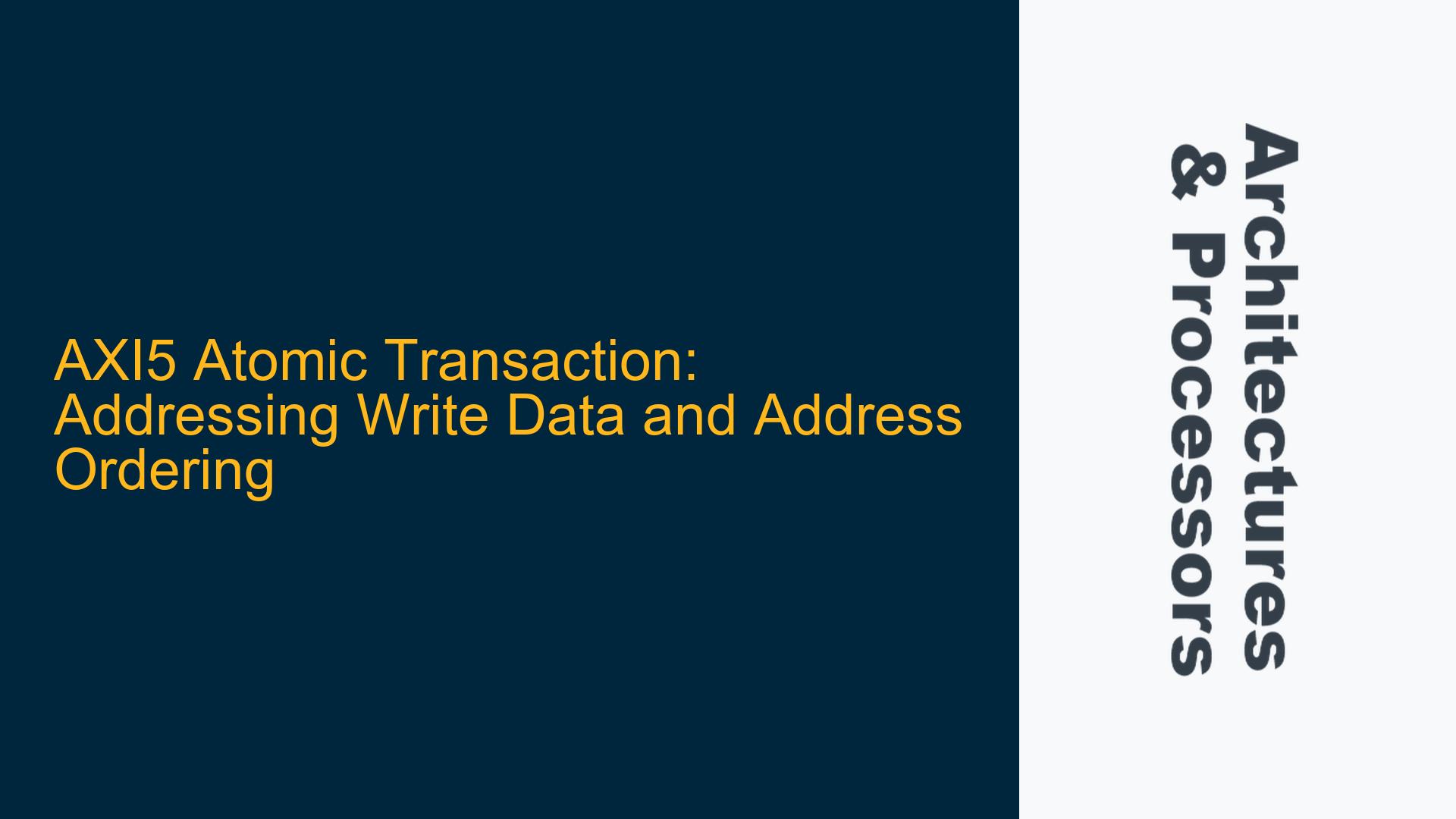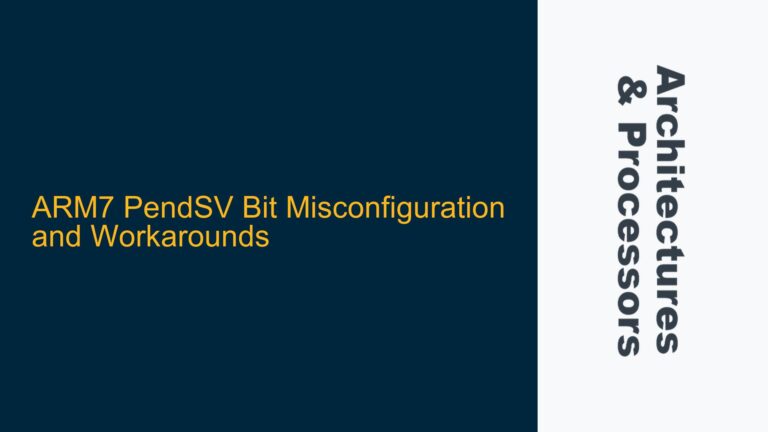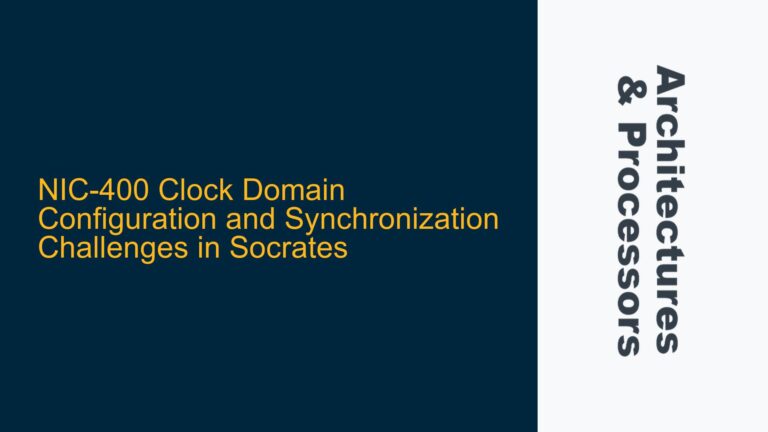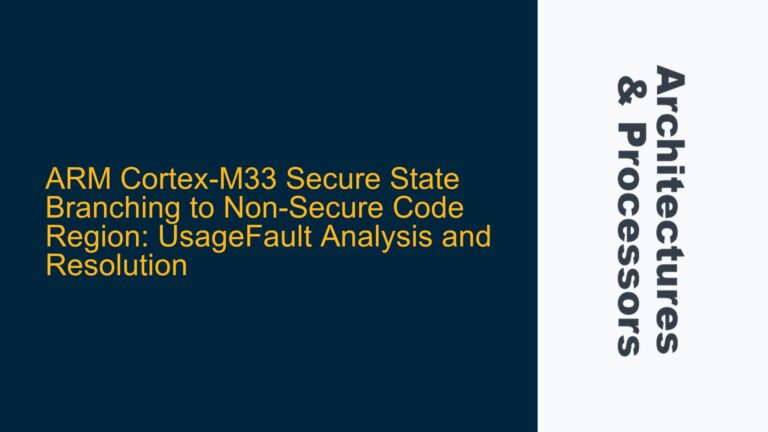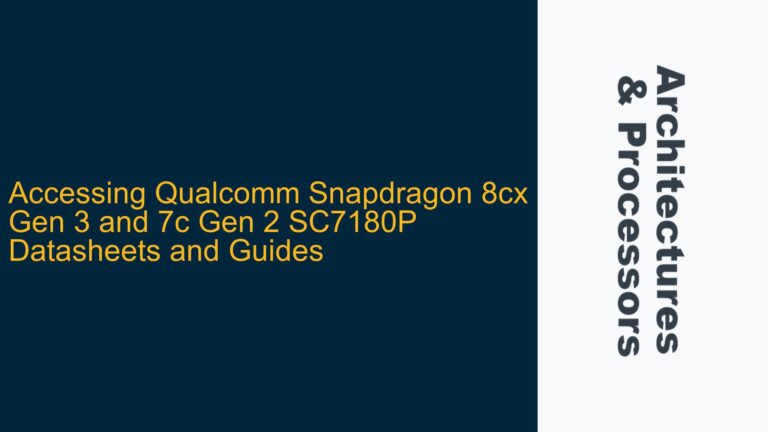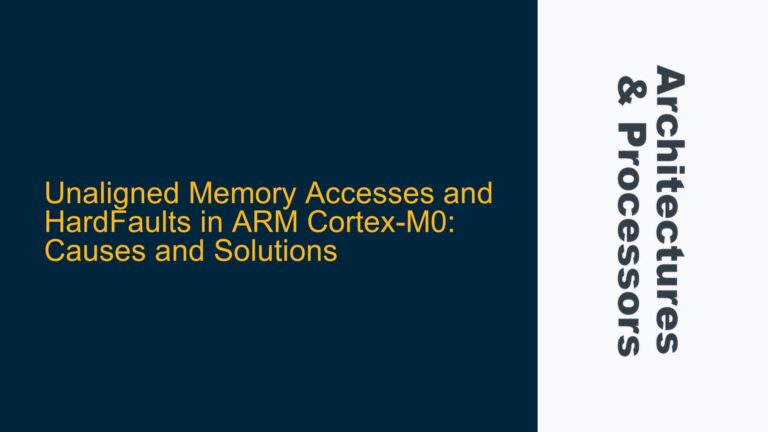AXI5 Atomic Transaction Mechanics and Write Data-Address Ordering
The AXI5 protocol, an evolution of the Advanced eXtensible Interface (AXI) standard, is widely used in ARM-based systems for high-performance, low-latency communication between components. One of its advanced features is support for atomic transactions, which ensure that certain operations are executed without interruption, maintaining data consistency in multi-core or multi-master systems. A key question arises regarding the ordering of write data and write address transfers in atomic transactions: Can write data be sent before the corresponding write address, and what are the implications of such an ordering?
In AXI5, atomic transactions are typically implemented using exclusive access mechanisms. An exclusive access sequence consists of two phases: an exclusive read followed by an exclusive write. The exclusive read phase marks a memory location as "reserved" for the initiating master, and the exclusive write phase attempts to update the reserved location. The success of the exclusive write depends on whether the reserved location has been modified by another master since the exclusive read.
The AXI5 protocol allows for flexibility in the ordering of write data and write address transfers. Specifically, the protocol permits write data to be sent before the corresponding write address. This flexibility is designed to optimize performance by allowing data to be pre-fetched or buffered, reducing latency in certain scenarios. However, this flexibility introduces complexities in the handling of atomic transactions, particularly in how the exclusive access monitor and the target device manage the incoming data and address.
The exclusive access monitor, which tracks exclusive access sequences, primarily concerns itself with the write address. It compares the write address against the stored read address from the exclusive read phase to determine whether the exclusive write can proceed. The monitor does not directly interact with the write data, as its role is to enforce atomicity by ensuring that no other master has modified the reserved location. Consequently, the order in which write data and write address arrive does not inherently affect the exclusive access monitor’s operation.
However, the target device—the recipient of the write data and address—must handle the incoming transfers appropriately. If write data arrives before the write address, the target device faces a challenge: it cannot process the data without knowing the address to which the data belongs. The target device may employ strategies such as buffering the write data until the address arrives or stalling the write data transfer by holding the WREADY signal low. These strategies ensure that the target device can correctly associate the write data with the corresponding address, maintaining data integrity.
The AXI5 protocol’s allowance for write data to precede the write address is a deliberate design choice aimed at optimizing performance. However, this flexibility requires careful implementation in both the initiator (the master sending the write data and address) and the target device to avoid data corruption or protocol violations. Understanding the interplay between the exclusive access monitor, the target device, and the AXI5 protocol’s ordering rules is crucial for designing robust and efficient systems.
Implications of Write Data Preceding Write Address in Atomic Transactions
The ability to send write data before the write address in AXI5 atomic transactions introduces several potential issues and considerations. These implications span the behavior of the exclusive access monitor, the target device, and the overall system performance.
First, the exclusive access monitor’s primary function is to ensure atomicity by comparing the write address against the stored read address from the exclusive read phase. Since the monitor does not interact directly with the write data, the order of write data and write address transfers does not inherently affect its operation. However, the monitor’s implementation may introduce practical constraints. For example, some implementations may delay the completion of the write data transfer until the write address has been processed. This delay ensures that the monitor can perform its address comparison before allowing the write data to be committed, simplifying the design and reducing the risk of race conditions.
Second, the target device must handle the incoming write data and address transfers correctly. If write data arrives before the write address, the target device cannot process the data immediately. The device must either buffer the write data until the address arrives or stall the write data transfer by holding the WREADY signal low. Buffering write data introduces additional complexity and resource requirements, as the target device must allocate memory to store the incoming data. Stalling the write data transfer, on the other hand, can impact system performance by introducing latency.
Third, the initiator (the master sending the write data and address) must be aware of the target device’s capabilities and behavior. If the target device cannot buffer write data, the initiator must ensure that the write address is sent before or concurrently with the write data. Failure to do so can result in protocol violations or data corruption. The initiator must also handle potential stalls from the target device, ensuring that it can retry or resend the write data if necessary.
Fourth, the system designer must consider the impact of write data-address ordering on overall system performance. Allowing write data to precede the write address can reduce latency in certain scenarios, such as when the data is readily available but the address calculation is delayed. However, this benefit must be weighed against the potential performance penalties introduced by buffering or stalling at the target device. The optimal ordering strategy depends on the specific requirements and constraints of the system.
Finally, the AXI5 protocol’s flexibility in write data-address ordering introduces potential corner cases and edge conditions that must be addressed during system design and verification. For example, if the target device buffers write data, it must ensure that the buffer does not overflow or underflow. Similarly, if the target device stalls the write data transfer, it must ensure that the stall does not cause deadlock or livelock conditions. Thorough testing and validation are essential to identify and mitigate these risks.
Best Practices for Handling Write Data-Address Ordering in AXI5 Atomic Transactions
To address the challenges and implications of write data-address ordering in AXI5 atomic transactions, system designers and engineers should follow a set of best practices. These practices ensure robust and efficient handling of atomic transactions while minimizing the risk of data corruption or protocol violations.
First, designers should carefully evaluate the capabilities and behavior of the target device. If the target device supports buffering of write data, the initiator can take advantage of this capability to send write data before the write address. However, the initiator must be aware of the buffer size and ensure that it does not exceed the target device’s capacity. If the target device does not support buffering, the initiator must ensure that the write address is sent before or concurrently with the write data.
Second, designers should consider the impact of write data-address ordering on system performance. In scenarios where the write data is readily available but the address calculation is delayed, sending the write data first can reduce latency. However, this benefit must be weighed against the potential performance penalties introduced by buffering or stalling at the target device. Designers should perform thorough performance analysis and simulation to determine the optimal ordering strategy for their specific system.
Third, designers should implement robust error handling and recovery mechanisms. If the target device stalls the write data transfer, the initiator must be able to handle the stall gracefully, retrying or resending the write data as necessary. Similarly, if the target device buffers write data, it must ensure that the buffer does not overflow or underflow. Implementing timeouts, retry counters, and buffer management logic can help mitigate these risks.
Fourth, designers should conduct thorough testing and validation of the system. This includes testing for corner cases and edge conditions, such as buffer overflow, underflow, and protocol violations. Stress testing and fault injection can help identify potential issues and ensure that the system behaves correctly under all conditions. Additionally, designers should verify that the exclusive access monitor and target device interact correctly, ensuring that atomicity is maintained and data integrity is preserved.
Finally, designers should document the system’s behavior and constraints clearly. This documentation should include details on the target device’s capabilities, the initiator’s behavior, and the system’s performance characteristics. Clear documentation helps ensure that all stakeholders understand the system’s design and behavior, reducing the risk of misunderstandings or errors during implementation and maintenance.
By following these best practices, system designers and engineers can effectively handle the challenges of write data-address ordering in AXI5 atomic transactions, ensuring robust and efficient system performance.
